
Expect the unexpected
Trove is filled to the brim with quirky and unusual pieces of Australian history and culture. Some of these interesting and unexpected items are taking centre stage on some huge signage at the National Library of Australia.
Come on a deep dive into Trove as we share the stories behind these wonder-filled items.
The smallest book in the world
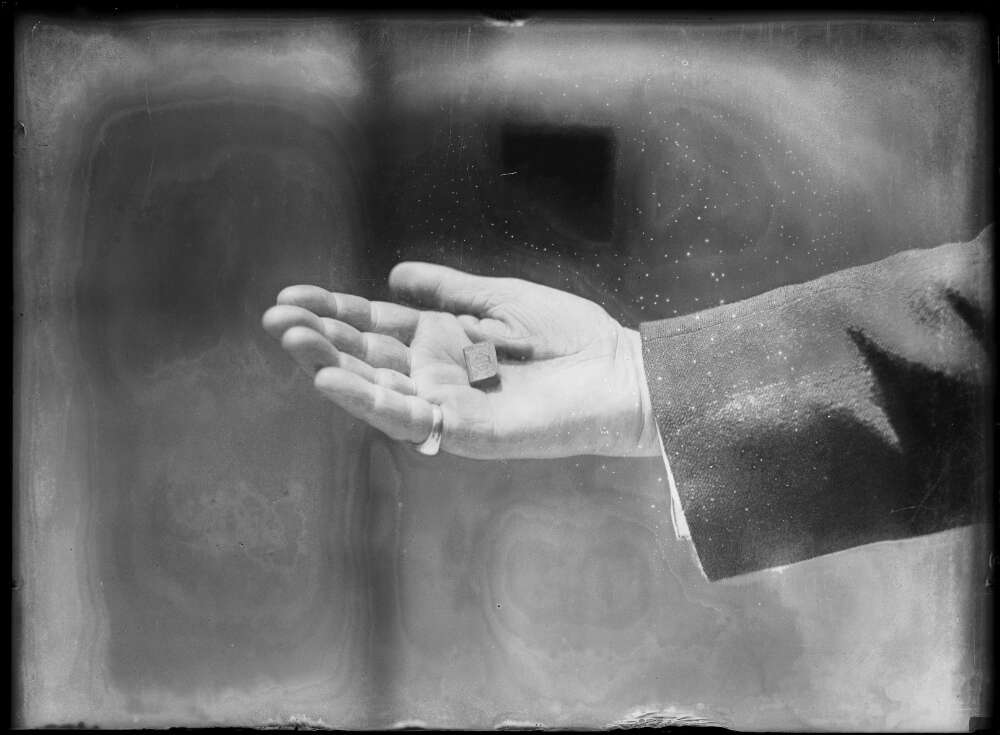
When this photograph was taken the book featured was claimed to be the smallest book in the world. The book is a copy of the New Testament and was presented as gift to the National Library of Australia from Mr. Hubert Haes of Essex, England. It measures at ‘three-quarters of an inch by five-eighths of an inch, and is a quarter of an inch thick’. The Sydney Morning Herald also reported on 27 October 1932, that the book is so small that it can only be read using a magnifying glass.
The photograph was captured by an unknown Fairfax photographer but doesn’t appear to have made it into any of the many syndicated newspaper articles about the book printed at the time. The photograph is one of over 18,000 glass plate negatives in the Fairfax archive in Trove.
Today, the smallest book in the National Library’s collection is The smallest book in the world = das kleinste Buch der Welt. It was created by German typographer Josua Reichert in 2002, and measures at just 2.9 x 2.4mm. The book is a limited edition, with only 30 copies in existence. It’s so tiny that we haven’t been able to digitise it for Trove.
Retro recipes
Whip up some nostalgia with retro recipes in Trove. There are thousands of recipes available through digitised cookbooks, newspapers, and magazines in Trove.
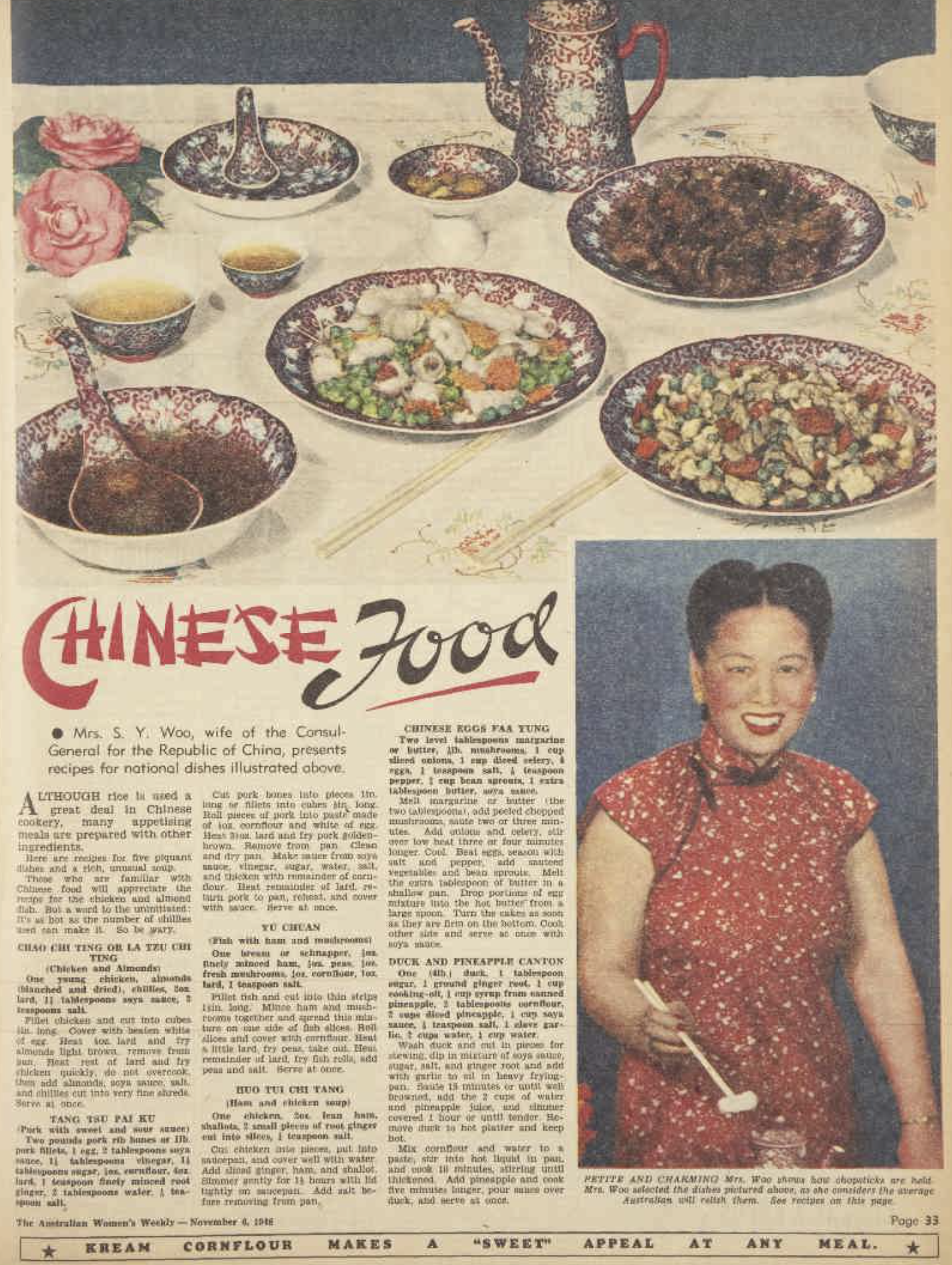
In 1948, The Australian Woman’s Weekly put on a spread with Mrs. S. Y. Woo, who joined her husband in a diplomatic mission to Canberra from Taiwan. Mrs. Woo shared 6 different dishes that she thought would appeal to Australian tastes, including Tang Tsu Pai Ku (Pork with sweet and sour sauce) and Duck and Pineapple Canton.
Find more vintage recipes in Trove with the cookbook collection feature. You might also enjoy our cooking-related blogs featuring recipes from around the world, for every occasion and for when you’re on a ration. We've also shared culinary favourites from the Trove community.
Felix the Cat
Felix the Cat is often considered to be the most recognisable cartoon character in history. Felix was the first cartoon character to be developed for the screen and mass merchandised. The young black cat was created in 1919 by Australian cartoonist, animator and film producer Pat Sullivan and American animator Otto Messmer.
Messmer's role in the original creation of Felix the Cat is disputed. However, after Sullivan’s death in 1933, Messmer continued to work on the comic for the rest of his life. In the 1940s and 1950s he published several Felix the Cat comic books.
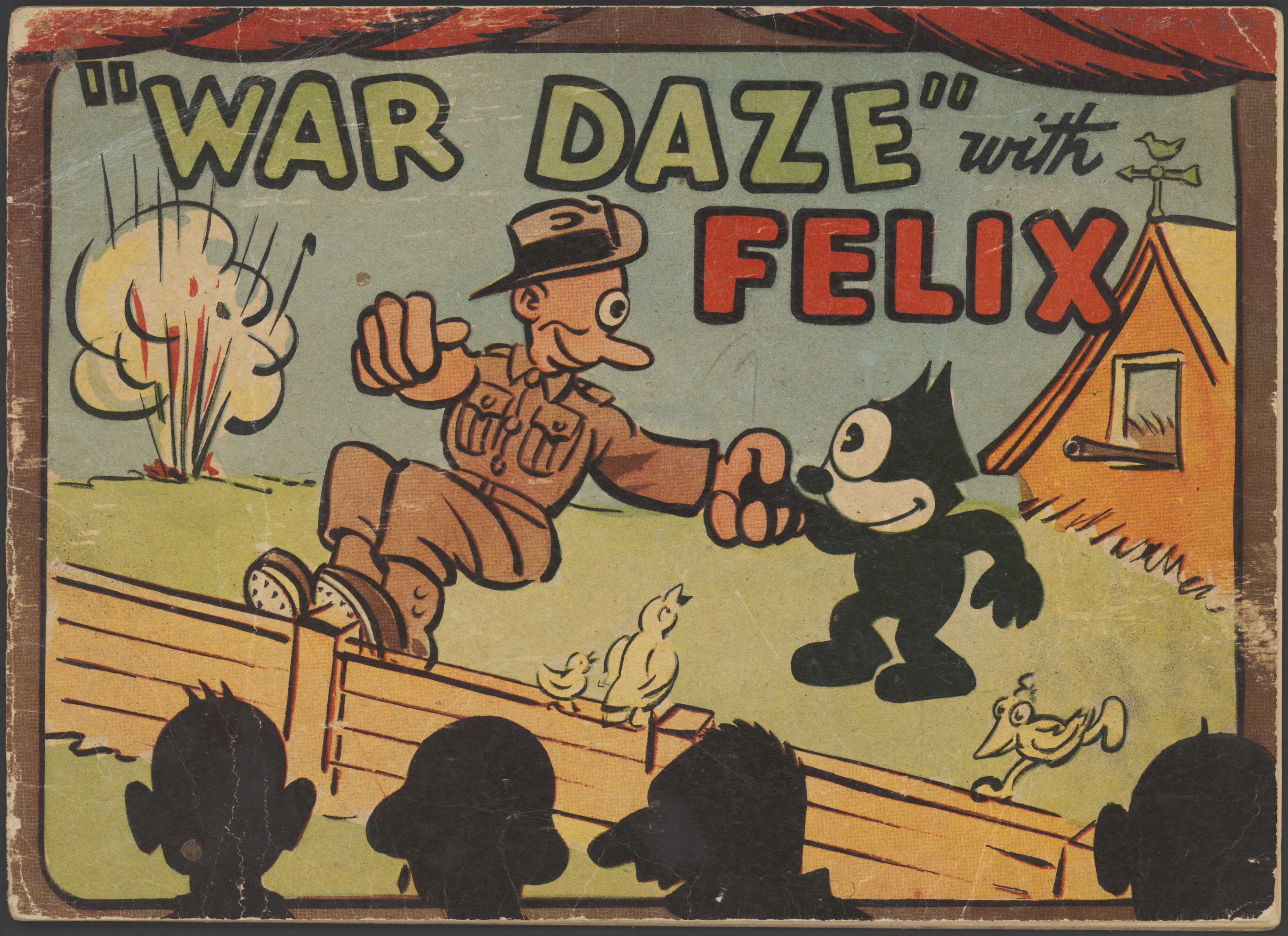
“War Daze” with Felix was published between 1939 and 1945, during World War II. The comic tells the story of Felix’s adventures as he follows his master into war. The full book is available to read on Trove. You’ll also find Felix, as well as other popular comic strips, printed in historical newspapers and magazines in Trove.
Some sheep and other quaint maps
This Sheep & Wheat map is part of The New Oxford Wall Maps of Australia series. The map was created by Griffith Taylor and H.O. Beckit and published by Oxford University Press in the 1920s.
The map shows the distribution of sheep and wheat production in Australia, in a somewhat comical and seemingly vague manner. We’ve either got some sheep or no sheep.
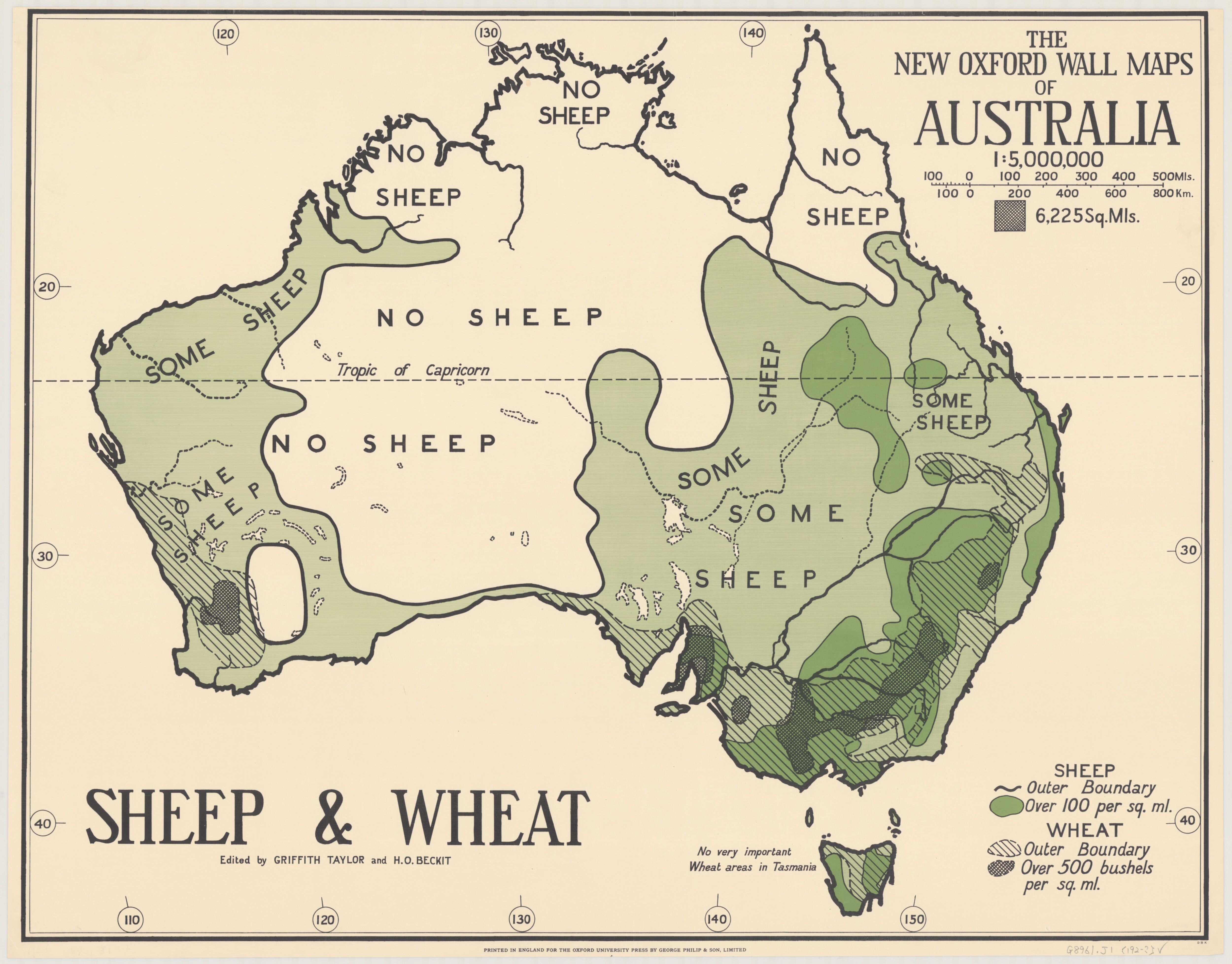
In total, there are 9 maps from the series available to view in Trove. In addition to the Sheep and Wheat map, there are several meteological maps, an Orographical map, a Cattle and Minerals map, and a Vegetation map. There’s even a Political map showing the partition of Australia’s States and Territories over time. The Population map is evidence of the views of the time and therefore inaccurate.
Waltzing Matilda
Waltzing Matilda is Australia’s best-known folksong and Trove is home to the items that illustrate its origin story.
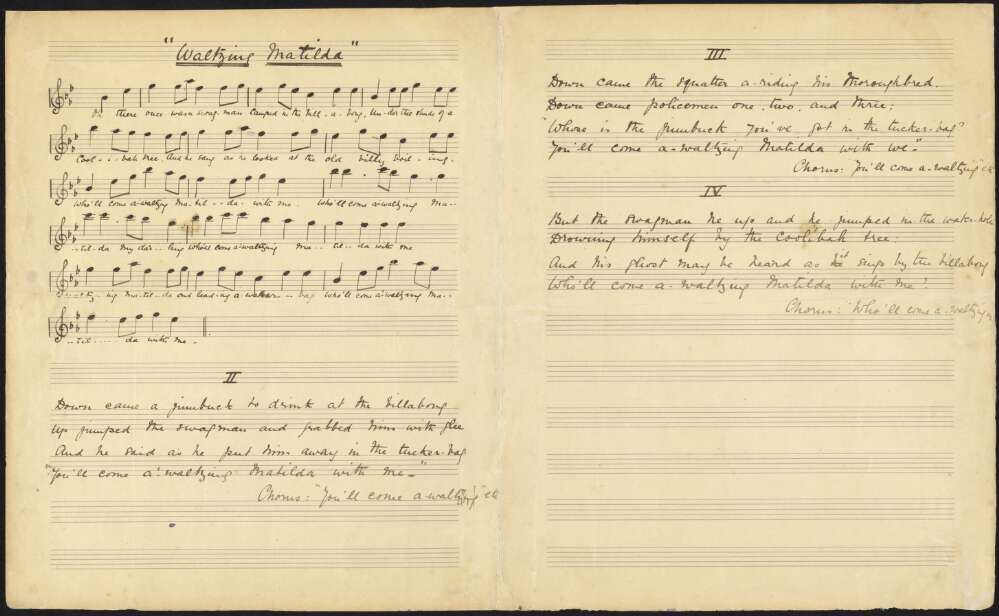
In 1895, while visiting her brother near Winton, Queensland, Christina Macpherson played a tune she had previously heard at the Warrnambool races. Banjo Paterson was listening and was inspired to make up some lyrics for it. Christina notated the melody and Banjo Paterson’s verses, and the original manuscript can be viewed in Trove.
Other related papers and photographs can be viewed in the personal papers of Banjo Paterson and Christina Macpherson’s papers relating to Waltzing Matilda.
Music enthusiasts can also search Trove for more original sheet music and audio recordings.
Cultural connections
Jiayuan Liang is a Chinese photographer living in Australia. He is on a mission to capture every major cultural festival and event in Australia.

In 2022 Liang documented Chinese New Year celebrations in Adelaide, Melbourne, and regional Victoria. The images capture the cultural diversity of the South Australian and Victorian communities. It was the Year of the Tiger, and festival highlights included cultural dance performances, traditional Chinese costumes and instruments, and a Lunar New Year special performance of 'Zodiac Spectacular'.
Discover more contemporary photography in Trove by searching images.
Trends through time
One of the best things about Trove is being able to step back in time and explore the trends and historical moments from past decades. Photographs can hold a lot of visual information and tell a story of our past.
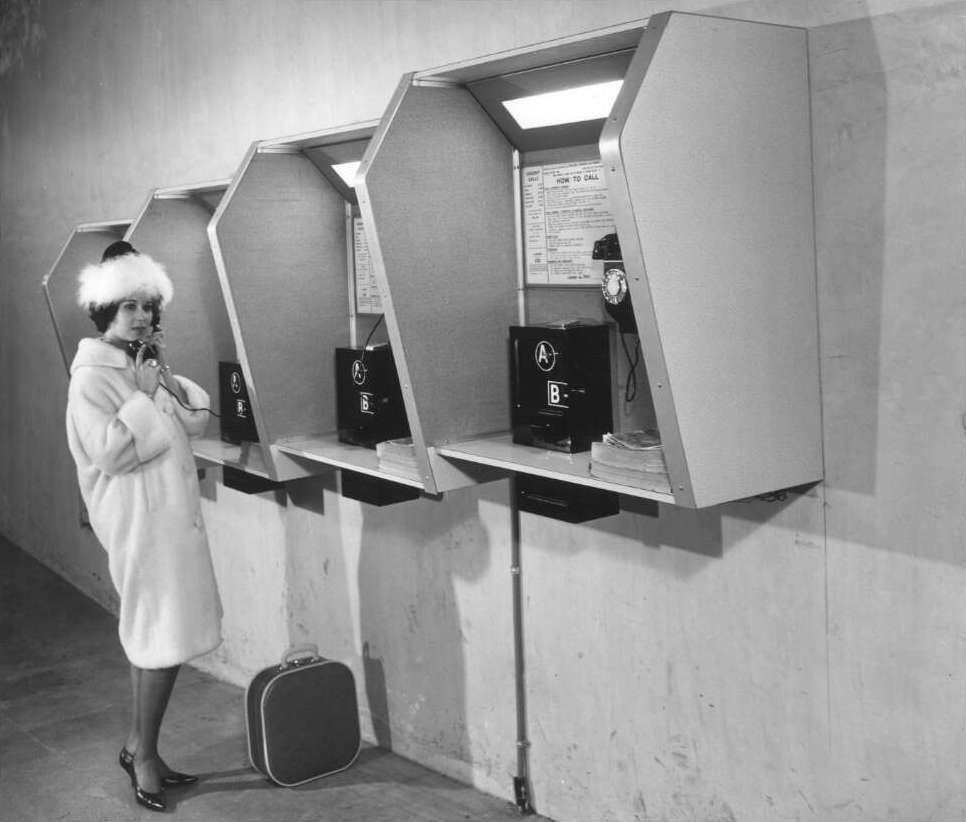
This photograph, for example, transports us back into the swanky style of the 1960s. It was captured by Wolfgang Sievers in 1963 and provides cultural clues to what life was like during that time. We are offered a taste of 1960s fashion and technology.
After emigrating to Australia from Germany in 1939, Wolfgang Sievers opened a photographic studio in Melbourne. He specialised in industrial, architectural, and advertising photography, and today his photographs serve as a documentary record of 20th century Australian life. Over 9000 of his images are available to view in Trove.
Sporting memories
Relive the glory of Australian’s greatest sporting moments in Trove.
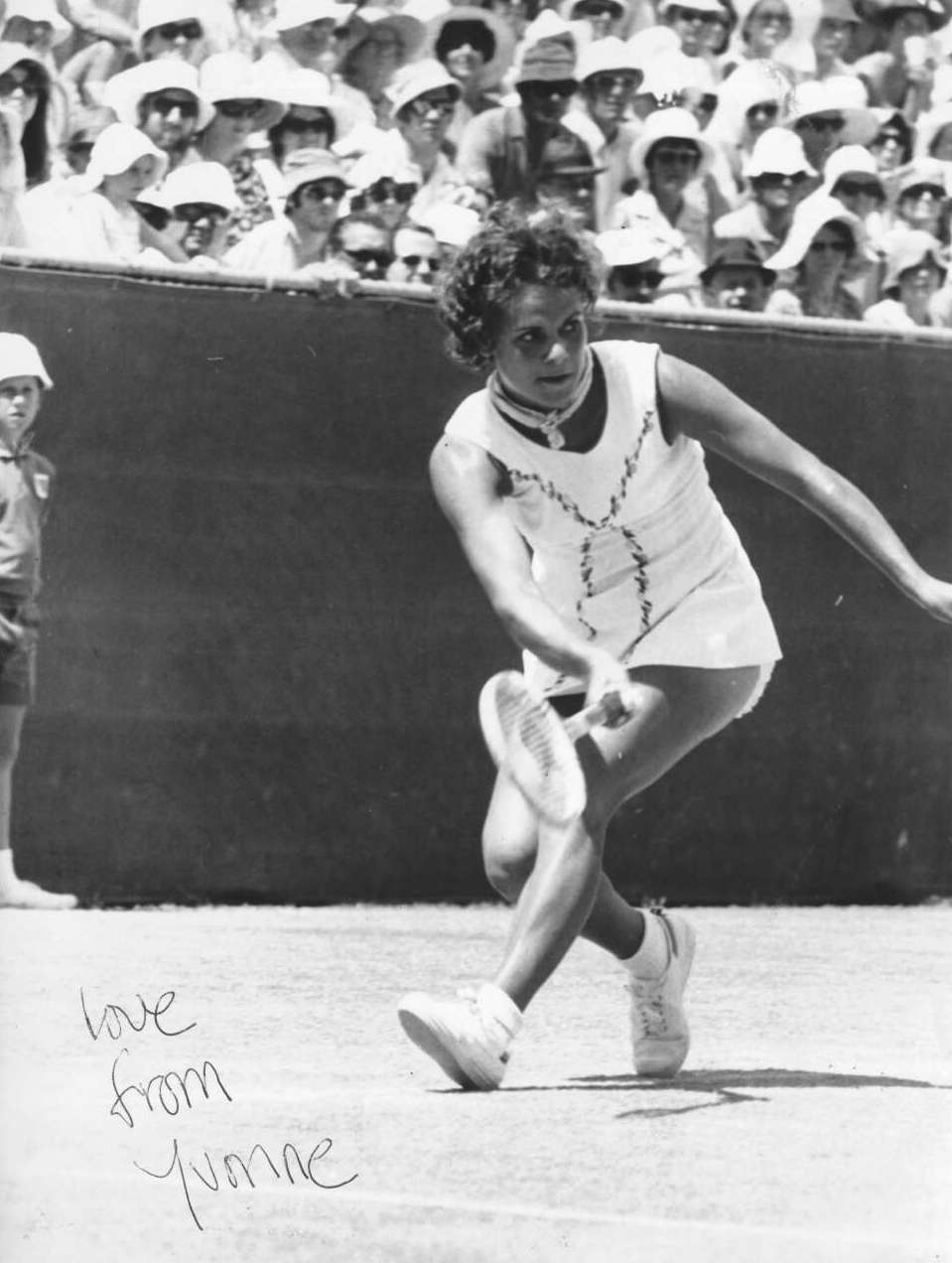
In this autographed image, Australian tennis player Evonne Goolagong is captured in action as she competes against Virginia Wade from Britain. Evonne won this match, marking a significant moment in her burgeoning career. The following year, she won the Wimbledon Ladies’ Singles Championship.
For more sporting history, read our Trove blogs on 5 ways to win Wimbledon and the history of the Richmond Football Club.
Take a peek
If you’re new to Trove, you’ll soon discover that Trove has something for every interest. It’s hard to describe what Trove is. It’s a search engine; it’s a digital home for Australia’s history and culture; and it’s a resource for Australian libraries, universities, museums, galleries, and archives. It’s also a community, a place for research and knowledge sharing. It’s free and available online all day, every day.
Learn how to start searching Trove.